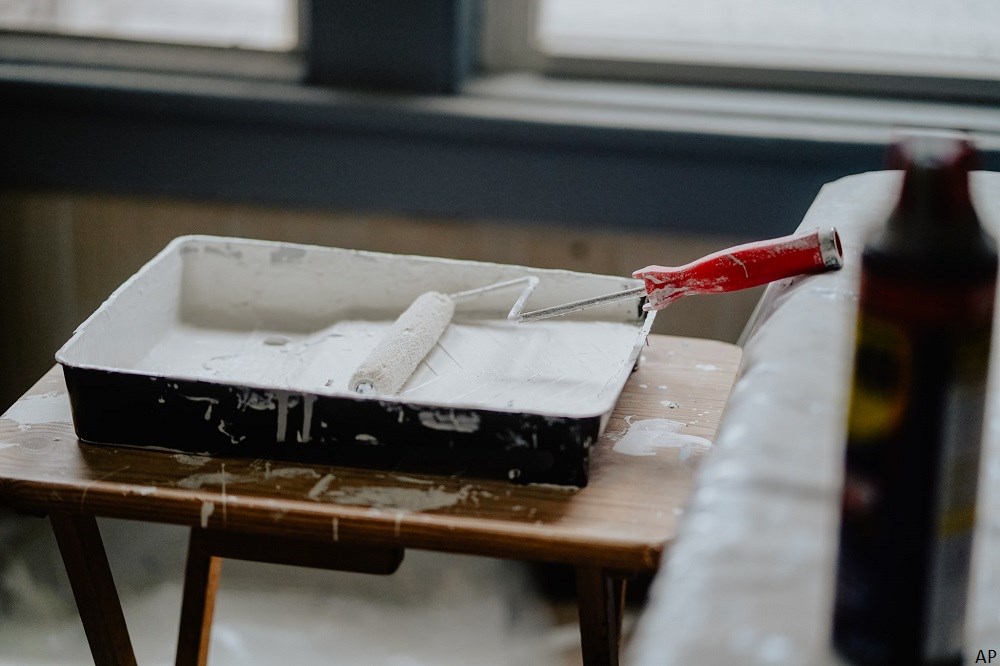
As North Americans hunker down for another summer of movement restriction and pandemic uncertainty, many will try to find comfort at home. Meanwhile, with the weather getting warmer, construction, home improvement activities have returned with a vengeance – which may mean big business for renovation retailers.
Last year was a record-breaking year for home improvements. Americans spent a whopping US$420 billion on modifying living spaces to accommodate working from home and remote learning requirements, according to a study from Harvard University. Closer to home, a RE/MAX 2021 Renovation Investment Report found that more than half of Canadians renovated their home in 2020 for personal or non-ROI purposes. Another survey by HomeStars found almost three-quarters (74%) of Canadian homeowners were planning to splurge on home improvements in 2021. Evidently, homeowners on both sides of the border are taking advantage of the record low cost of borrowing.
These secular trends create a growth tailwind for home improvement retailers who have been enjoying blockbuster sales growth in recent times. Investors looking to play the home remodelling trend may want to keep the following names on their screens and wait for a meaningful dip to create some margin of safety.
| The Home Depot Inc | |
| Ticker | HD |
| Current yield: | 2.10% |
| Forward P/E: | 24.75 |
| Price | US$319.23 |
| Fair value: | US$216 |
| Value | 46% premium |
| Moat | Wide |
| Moat Trend | Stable |
| Star rating | * |
| Data as of April 09, 2021 | |
Home Depot (HD) is the world's largest home improvement specialty retailer. It offers a wide range of products operates through 2,300 warehouse-format stores as well as online in the U.S. Canada, and Mexico. The retailer’s product portfolio includes building materials, home improvement products, lawn and garden products, and decor products, as well as home improvement installation services and tool and equipment rentals.
The company is projected to clock more than US$135 billion in revenue in 2021 as the increased demand for its products last year carried forward into 2021. “The swell of DIY spending in 2020 likely pulled forward some future demand, and we expect to see DIY normalize in 2021,” says a Morningstar equity report, noting that as pent-up demand for professional projects will begin to release this year, a resurgence of higher-ticket do-it-for-me (DIFM) projects should more than offset weaker DIY spending.
Despite the pandemic-induced economic downdraft, home improvement spending rose across most of Home Depot’s product categories. “Over the short term, the release of pent-up DIFM demand and deployment of additional government stimulus and household savings should support elevated spending,” says Morningstar sector director Brian Bernard, who recently increased the stock’s fair value from US$210 to US$216, incorporating 2020 outperformance and a stronger 2021 forecast.
The wide-moat retailer is also tapped into trends that could fuel demand over the longer term. “The repair-and-remodel market should also benefit from several long-term secular growth tailwinds, including ageing housing stock, favourable demographics, and increased acceptance of smart home and energy-efficient products and solutions,” says Bernard.
| Lowe's Companies Inc | ||
| Ticker | LOW | |
| Current yield: | 1.24% | |
| Forward P/E: | 20.28 | |
| Price | US$198.51 | |
| Fair value: | US$158 | |
| Value | Fairly valued | |
| Moat | Wide | |
| Moat Trend | Stable | |
| Star rating | ** | |
| Data as of April 09, 2021 | ||
The second-largest home improvement retailer in the world, Lowe's (LOW) operates about 1,970 stores across the U.S. and Canada. Its products and services include home decorating, maintenance, repair, and remodeling, targeted at retail do-it-yourself and do-it-for-me customers as well as commercial business clients.
With a robust competitive advantage, the retailer registered almost US$90 billion in sales during 2020 and is projected to capture a double-digit share of the domestic home improvement market, according to a Morningstar equity report.
As management’s updated productivity plan pays off, structurally higher profit margins should follow, the report adds. The firm’s operating margin are projected by Morningstar to reach more than 11% in 2021, up from 9% in 2019. “Additionally, demand in home improvements stemming from consumers spending more time at home (due to COVID-19) remains inflated, which could generate better cost leverage results faster than we anticipate,” says Bernard, who recently increased the stock’s fair value from US$145 to US$158, incorporating an improved 2021 sales outlook and to “account for cash earned since our last update.”
Lowe's, Bernard says, still has opportunities in underserved domestic markets and via wider professional penetration, particularly with the tie-up of Maintenance Supply Headquarters and Central Wholesalers. “Relatively stable housing prices and rising household formations should support further sales growth and cost leverage,” he adds.
The wide-moat retailer’s customer service, knowledge, and innovation are topnotch in the home improvement business and form the foundation upon which its business has been built. “The familiarity of the brand and knowledge of the employee base keep the business in the forefront of consumers' minds as the premier choice for home improvement needs,” Bernard argues.
| Sherwin-Williams Co | ||
| Ticker | SHW | |
| Current yield: | 0.85% | |
| Forward P/E: | 28.74 | |
| Price | US$250.79 | |
| Fair value: | US$135 | |
| Value | 85% premium | |
| Moat | Narrow | |
| Moat Trend | Stable | |
| Star rating | * | |
| Data as of April 09, 2021 | ||
With approximately 4,800 stores, Sherwin-Williams (SHW) is the largest provider of architectural paint in the U.S. In addition to selling premium paint at higher price points than most competitors, the company also sells paint-related products in big-box stores and provides coatings for original equipment manufacturers. Sherwin-Williams charges a premium for its paints enabled by contractors’ preference for high-quality paint that decreases preparation and application time which lowers labour costs, Bernard notes.
While North America accounts for more than three-fourths of Sherwin's business, the company gained meaningful international exposure through the acquisition in 2016 of Valspar. Like other home improvement retailers, Sherwin-Williams is well-positioned to benefit from supportive forces including the repair and remodel spending growth, the release of pent-up DIFM demand, government stimulus, and higher household savings, says a Morningstar equity report. Furthermore, long-term secular growth tailwinds created by ageing housing stock, favourable demographics, and growing trends for smart home and energy-efficient products and solutions should conspire to fuel the R&R market, driving demand for home improvement retailers’ products.
“Typically, demand for higher-priced discretionary products wanes during a recession, but the combination of government stimulus, fewer discretionary spending outlets, and more time spent at home caused improvement spending to buck the historical trend in 2020,” points out Bernard, who pegs the stock’s fair value at US$135 and forecasts a long-term revenue growth rate of 4.5%.
Bernard’s outlook for architectural paint sales is predicated on a strengthening U.S. housing market. “As homebuilding gradually recovers over the next five years, we expect same-store sales growth to average about 5% per year,” he says.
Passionate about Investing in New Ideas?
Explore the latest Global Thematic Fund Landscape report here























